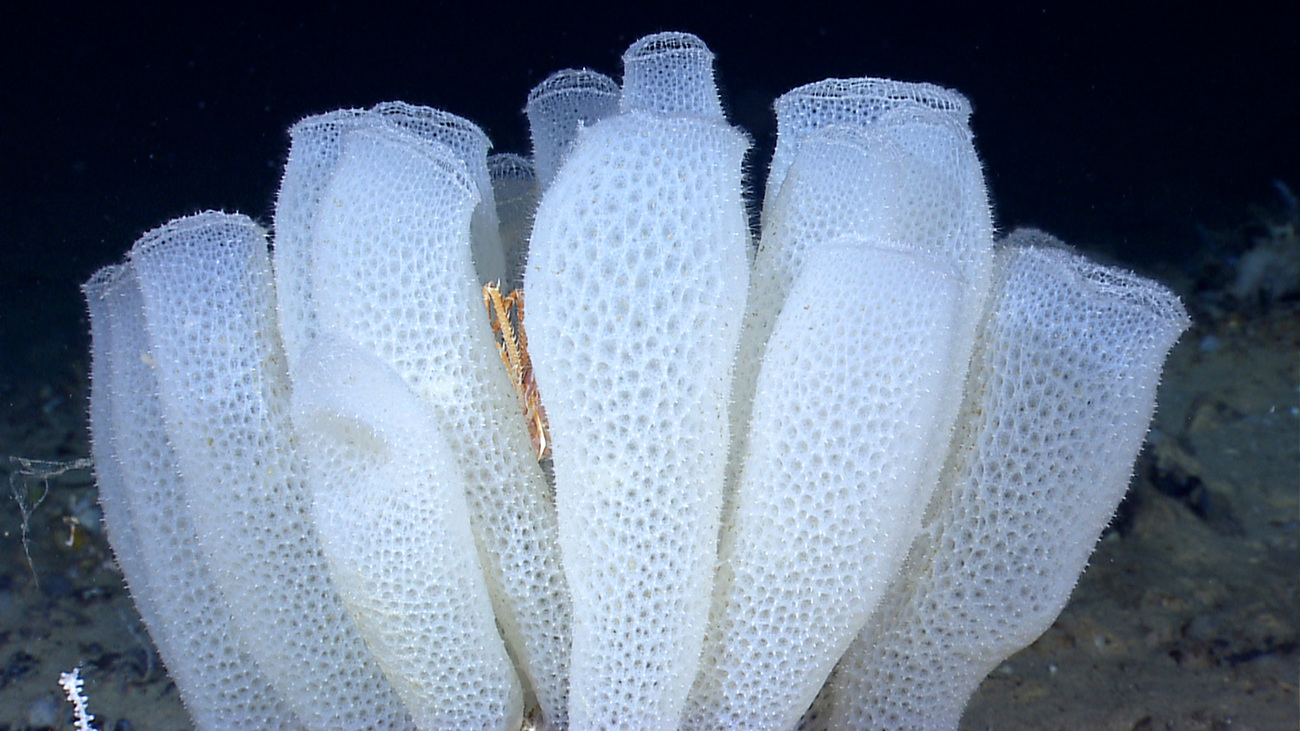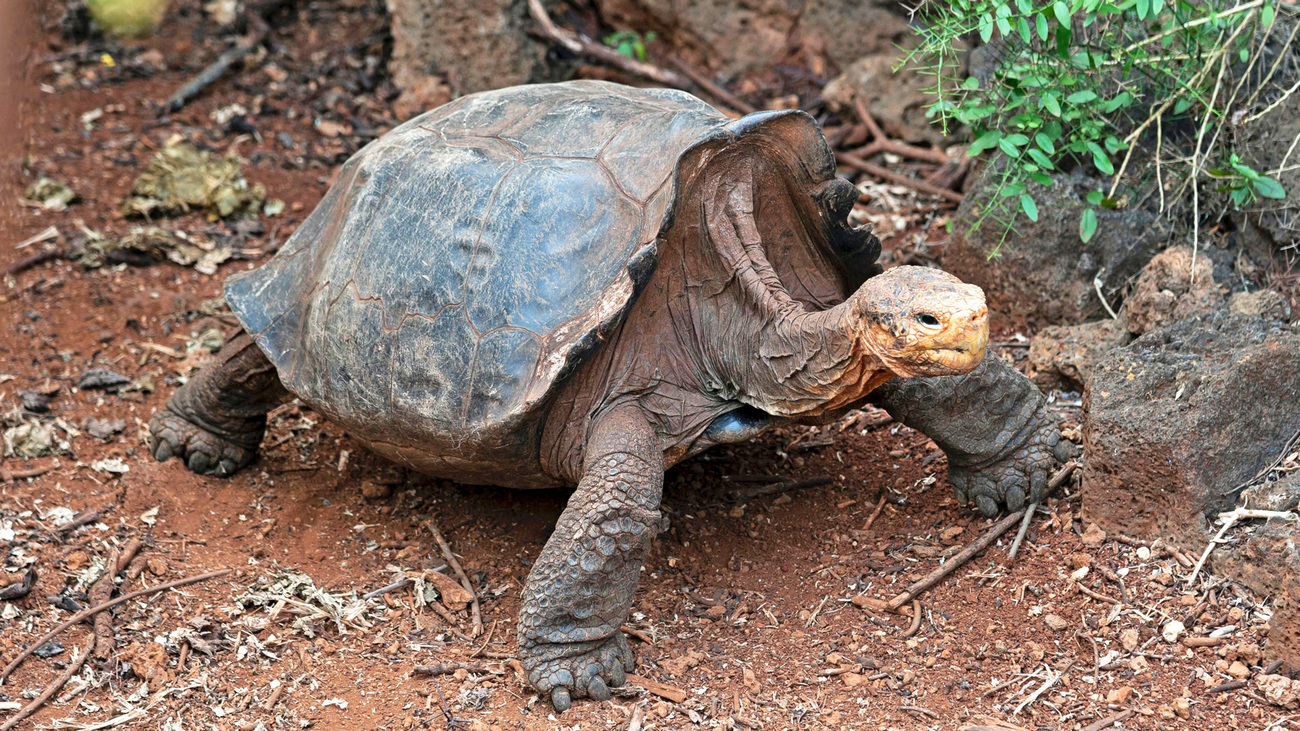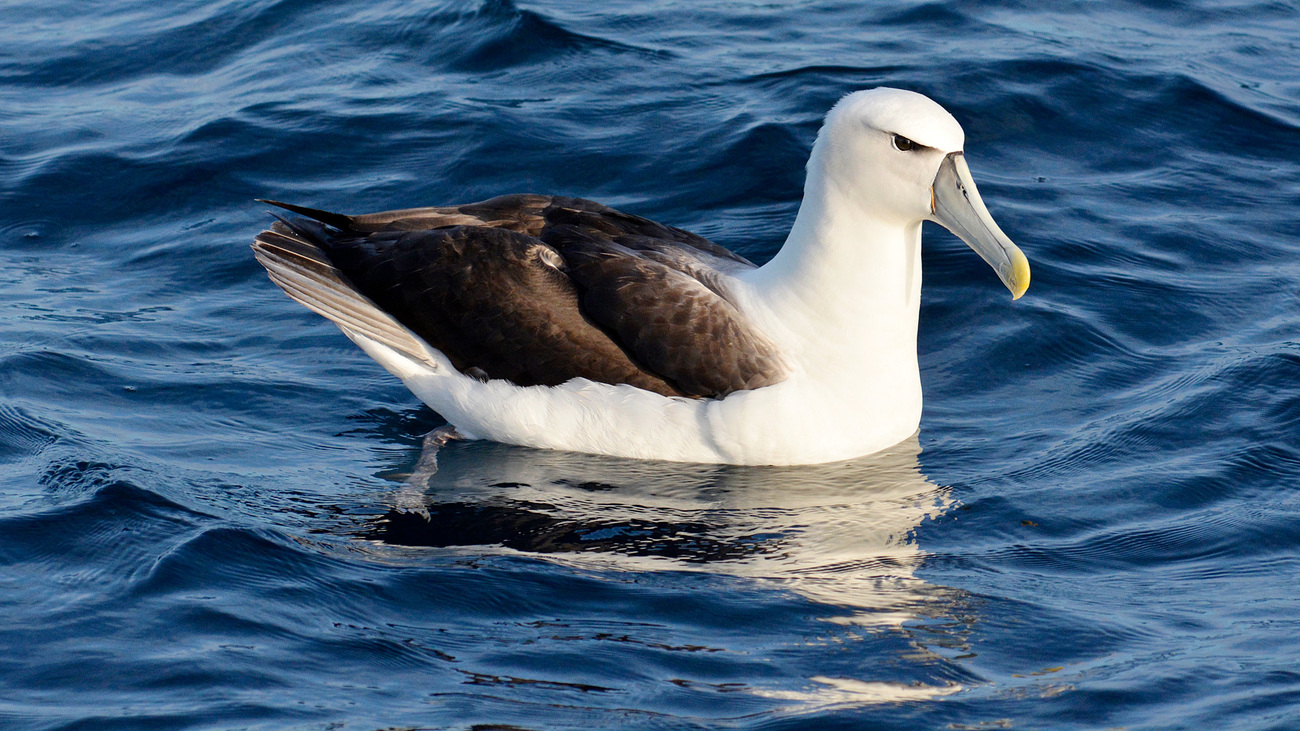Animals with the longest lifespans
Animals with the longest lifespans
Although many people are aware of the incredibly long lives of some turtles, tortoises, sharks, and elephants, the true top contenders for the title of animal with the longest lifespan might surprise you. Did you know that a sea sponge in Antarctica has lived for 15,000 years or that some corals in Hawaii have lived for almost 5,000?
Some animals have a rare trait called biological immortality, meaning their cells can regenerate infinitely, preventing biological aging. However, these animals can’t necessarily live forever, as they may still succumb to predation, disease, and changes in their environment. One example of a species with biological immortality is the aptly named immortal jellyfish. Another is the lobster—however, because lobsters continue to grow throughout their lives, they eventually outgrow their shells, meaning they often perish from exhaustion or shell collapse.
Aren’t animals amazing? We think they’re pretty special, too, which is why IFAW is dedicated to protecting all animals––large and small, old and young––around the globe. Through science, advocacy, and working with communities, IFAW tackles the most pressing threats to wildlife today.
Glass sponges

Glass sponges are considered the oldest animals on Earth—and it’s by a long shot. Scientists estimate that they can live for more than 10,000 years, possibly 15,000 years maximum. One glass sponge observed by researchers in the Ross Sea, a bay of Antarctica, is thought to be the oldest living animal on the planet. Scientists have also discovered a skeleton of a glass sponge in the East China Sea that they believe lived for 11,000 years. These individual animals are so old that they could have been alive during the last ice age.
While sea sponges are often thought of as rocks or plants, they are in fact members of the animal kingdom. Glass sponges, one type of sponge known for their large, complex, glass-like skeletons, spend their lives attached to hard surfaces, filtering water to consume bacteria and plankton. Their body structure provides a habitat for other animal species, like small crustaceans.
While it’s difficult to assess how many glass sponges remain in the ocean, one thing is clear: glass sponge reefs are being damaged by human activities.
They face serious threats from bottom trawling and deep-sea mining, which can damage or destroy their fragile, slow-growing reef structures. Ocean warming and acidification are two other serious issues that endanger the survival of this long-lasting species.
IFAW is dedicated to marine conservation, with projects in place around the world to protect the vulnerable species that live in our oceans.
Black coral
Known for their bright colors and beautiful, rock-like formations, corals are some of the longest-living animals on Earth. Some coral species can live up to 5,000 years, and two of the oldest are found in the deep ocean near Hawaii. A gold coral was estimated to be about 2,740 years old, and a black coral was estimated to be about 4,270 years old—which means it was alive during the Old Kingdom of Ancient Egypt. Black corals in the genus Leiopathes are now known to be the longest-living corals in the world.
Despite this feat, black coral (and all other coral species) face severe threats to their survival, including pollution, overfishing, destructive fishing practices, and coral mining. In just nine years, the world lost 14% of its coral cover.
Rising ocean temperatures is causing coral bleaching, one of corals' biggest threats. Now, more than ever, marine conservation is essential to protect the futures of these ancient organisms. IFAW is working tirelessly in 2025 and beyond to implement nature-based climate solutions that protect our beautiful coral reefs.
Giant barrel sponges
Another sea sponge makes the top three of the oldest animals on Earth—the giant barrel sponge, found in the Caribbean Sea. Researchers estimate that some individuals found near Key Largo, Florida, may be over 2,300 years old—meaning they began their lives during the time of the Roman Empire. This species is called the ‘redwood of the reef’ because of its large size and long lifespan. It’s also an important organism for increasing habitat complexity and filtering seawater in its ecosystem.
As these amazing organisms live on coral reefs, they face the same threats as corals themselves. Human activity, like fishing and trawling, impacts their survival, and warming ocean temperatures are doing serious damage.
Greenland sharks
Greenland sharks are the longest-living vertebrates in the world. The oldest known individuals recorded by scientists have been about 400 years old, though with the large margin of error, it’s possible that they could live for more than 500 years. Researchers think that living in such cold waters of the North Atlantic and Arctic Oceans probably helps slow down the metabolic processes and biochemical activity of these sharks, extending their lifespans. It’s thought that female Greenland sharks aren’t ready to breed until they are 156.
Classed as vulnerable in 2025, the global population of these sharks is in decline, as they face significant threats from overfishing and bycatch. Historically hunted for their liver oil, these sharks continue to be unintentionally caught in various fisheries, jeopardizing their already vulnerable populations. IFAW is actively working to enhance protections for sharks globally, advocating for stricter regulations to manage the trade and catch that is threatening sharks.
Tortoises

Tortoises are well known as some of the longest-living animals on Earth. One long-living species is the Aldabra giant tortoise, which is also one of the largest tortoises. Native to the Seychelles, these reptiles can generally live up to 150 years and reach weights of up to 250 kilograms (550 pounds). One individual Aldabra giant tortoise lived in captivity in India and was thought to be 250 years old—named Addawaita, this tortoise died in 2006.
Another Aldabra giant tortoise, named Jonathan, is reported to be about 191 years old and may be the oldest living land animal today. Currently, Jonathan is cared for by a veterinarian on the island of Saint Helena.
The critically endangered radiated tortoise is another species with an incredibly long lifespan. Found in Madagascar, these tortoises can live in the wild for up to about 50 years. However, one individual in captivity supposedly lived to the age of 188. In 1966, this tortoise, named Tu’i Malila, died at the royal palace in Tonga, and was said to have been born in 1777.
One of the most famous tortoises was Harriet, a Galápagos tortoise who was likely born sometime around 1830 and was taken into captivity by Charles Darwin. Harriet spent much of her life in Australia and died in 2006 at the Australia Zoo at over 175 years old.
Sadly, tortoises around the world are endangered due to habitat loss, the illegal pet trade, and poaching for traditional medicine and food. Many species are slow to mature and reproduce, which makes it hard for populations to recover once they’ve been exploited.
From supporting training programs to improve safe handling of seized animals, to partnering with customs officials to stop illegal trafficking at borders, IFAW is working to combat wildlife crime and protect vulnerable animals like tortoises.
Ocean quahogs
It’s common for ocean quahogs to be centenarians, and they can live up to 225 years. These clams are found in the North Atlantic from Newfoundland to North Carolina, and they are commercially harvested for human consumption. They grow very slowly, not reaching reproductive maturity until age six.
A species with a declining population, ocean quahogs are increasingly at risk due to seabed disturbance from bottom trawling, sand and gravel extraction, and offshore oil and gas activities. These practices can destroy the stable, sediment-rich habitats that ocean quahogs rely on.
Ocean quahogs and many other ocean-dwelling species are directly benefiting from IFAW’s extensive efforts to protect marine ecosystems. By advocating for sustainable fisheries management and working to secure marine protected areas, we can give species like the ocean quahog a chance to thrive.
Bowhead whales

Found in the icy waters of the Arctic and subarctic ocean, bowhead whales are considered the longest-living whales—which also makes them the longest-living mammals. They can live for over 200 years, and they don’t become sexually mature until around age 25.
Though bowhead whales are not endangered today, they have been depleted by commercial hunting and still face the threat of entanglement in fishing gear. Melting sea ice may also pose a threat, as the Arctic opens up to more shipping activity. Bowhead whales are protected under CITES, the US Endangered Species Act, and the US Marine Mammal Protection Act.
Whales are one of the most important animals in our oceans and play an important role in climate mitigation. Their feces feed marine plankton, which produce vast amounts of oxygen. In turn, they remove carbon dioxide from the atmosphere. IFAW is dedicated to supporting the health and survival of these colossal animals.
Ending commercial whaling—an industry that has had a severe, ongoing impact on whale populations—is one of our long-standing projects. Sadly, about 1,000 whales continue to be hunted for commercial purposes around the world each year. But, our public awareness campaigns are helping to shift mindsets around the world, and we will continue to lobby governments for better legal protections until whaling is abolished for good. We’re working hard to promote whale watching as a sustainable alternative.
We’re also committed to making the ocean safer for whales by lobbying for changes in shipping routes and vessel speeds in areas heavily populated by whales.
Rougheye rockfish
Rougheye rockfish are deepwater fish found in the North Pacific. They can live for over 200 years. They are unique among their relatives, as many other rockfish can only live up to 11 years. Researchers have found that these fish generally start breeding at age 25, and they produce more and stronger young as they get older.
Rougheye rockfish are increasingly threatened by a range of human activities. They are caught in commercial and recreational fisheries, and are also trapped during scientific research operations.
Because they’re slow-growing and can live for such a long time, even low levels of fishing can have lasting impacts on their populations. Pollution and changing ocean temperatures add to the stress, as warming waters, ocean acidification, and habitat degradation disrupt their deep-sea environment.
Lobsters
It’s difficult to determine the age of lobsters, as they don’t leave much evidence behind when they shed their shells. However, researchers believe that American lobsters can live to be 100 years old. European lobsters may have a slightly shorter lifespan, as the oldest European lobster was reportedly 72 years old. One particularly old American lobster, dubbed George, was caught in 2009—estimates based off his weight suggested he could have been 140 years old. After living in a restaurant’s tank for about 10 days, George was then released back into the ocean in Maine.
Population estimates as of 2025 reveal that multiple species of lobster have declining numbers, with the biggest threat to their survival being overfishing. Increased demand for lobster meat has led to intense fishing pressure in many regions.
Tuataras
Tuataras have one of the slowest growth rates of all reptiles, and they can live for up to 100 years. These lizard-like animals are the largest reptiles in New Zealand and are the only living members of the order Rhynchocephalia—they’re sometimes called ‘living fossils’ since they have no living relatives. Male tuataras have sharp spines running down their backs, which they use to attract mates and defend themselves against other males.
With over 55,000 remaining individuals in the wild, tuataras are classed as least concern by the IUCN. However, as demand grows in the exotic pet market, tuataras are at risk of being illegally captured and sold, which could endanger their population. Habitat loss from human development and introduced predators further puts their survival at risk. Combatting wildlife crime is key for protecting tuataras.
Cockatoos
The oldest confirmed bird in captivity was a pink cockatoo named Cookie, who lived until age 83 at Chicago’s Brookfield Zoo. A famous sulfur-crested cockatoo in captivity named Cocky Bennett was rumored to have lived until age 119, but his age is unconfirmed. Generally, the average lifespan of a sulphur-crested cockatoo in the wild is 40 years, but other cockatoo species may live longer.
In captivity, cockatoos can generally live up to 60 to 70 years, which makes them very difficult to care for. Unfortunately, this has not deterred the poaching of cockatoos from the wild for the exotic pet trade. Because of this, several cockatoos are now critically endangered in 2025:
- The Philippine cockatoo (Cacatua haematuropygia), of which an estimated 430 to 750 are left in the wild
- The citron-crested cockatoo (Cacatua sulphurea), with fewer than 2,000 left in the wild
- Baudin’s black-cockatoo (Zanda baudinii), with 2,500 to 4,000 left in the wild.
The only way to protect these vulnerable species is to take action against wildlife crime. We need to ensure that these wild creatures have the protection they need from the illegal markets that threaten their survival.
Albatrosses

The oldest wild bird on record is Wisdom, a female Laysan albatross (Diomedeidae) who is estimated to be about 73 or 74 years old as of 2025. She was seen alive and healthy in December 2023 on Midway Atoll in the Pacific. Researchers first tagged her in 1956, and she was estimated to have hatched around 1951.
Albatrosses are increasingly threatened by bycatch, especially in longline and trawl fisheries. Thousands of these wild birds die each year after being accidentally hooked or entangled in fishing gear while trying to snatch bait. Several species of albatross are now endangered and critically endangered, including:
- Sooty albatross (Phoebetria fusca)
- Waved albatross (Phoebastria irrorata)
- Amsterdam albatross (Diomedea amsterdamensis)
- Northern royal albatross (Diomedea sanfordi)
- Tristan albatross (Diomedea dabbenena)
- Grey-headed albatross (Thalassarche chrysostoma)
IFAW is working to promote more responsible fishing practices and reduce the number of seabirds caught as bycatch. We work with partners such as Australian Seabird & Turtle Rescue and SANCCOB to rescue and rehabilitate injured coastal birds.
It’s tricky to tell how old birds are, as they don’t show signs of aging in the same way other animals do. Once they acquire their adult plumage, they tend to look the same for the rest of their lives, unless they become ill or injured. You may be surprised to learn that many birds can live as long as the average human—ravens have been known to live for 69 years, and many parrots can live up to 60, 70, or 80 years.
Elephants
As some of the largest animals on Earth, it’s not surprising that elephants have long lifespans, as a large size in mammals generally corresponds to a slow metabolic rate. African elephants are estimated to have a maximum lifespan of about 74 years, while their Asian elephant cousins can live up to about age 80. The world’s oldest recorded elephant is thought to be an Asian elephant who lived to age 89 in captivity.
Unfortunately, all three elephant species are facing serious threats to their survival: African forest elephants (Loxodonta cyclotis), African savannah elephants (Loxodonta africana), and Asian elephants.
Drought and climate change are limiting their resources, human expansion is reducing and fragmenting their habitat, and poaching is still a rampant problem.
Through our Room to Roam initiative, IFAW is working to secure and connect habitats for elephants across East and southern Africa. By working with local communities, rangers, and traditional leaders, we help elephants move freely and safely between protected areas, which is crucial for their long-term survival.
Want to help protect wildlife around the world?
Related content
every problem has a solution, every solution needs support.
The problems we face are urgent, complicated, and resistant to change. Real solutions demand creativity, hard work, and involvement from people like you.